Creating a beautiful garden can be a challenge, especially when dealing with weeds. One great way to tackle this problem is by using perennial ferns. These lush plants not only help fill your garden with greenery, but they also grow close together, making it hard for weeds to take root.
Choose among these stunning perennial ferns that can upgrade your garden while keeping it weed-free.
1. Holly Fern (Cyrtomium spp.)
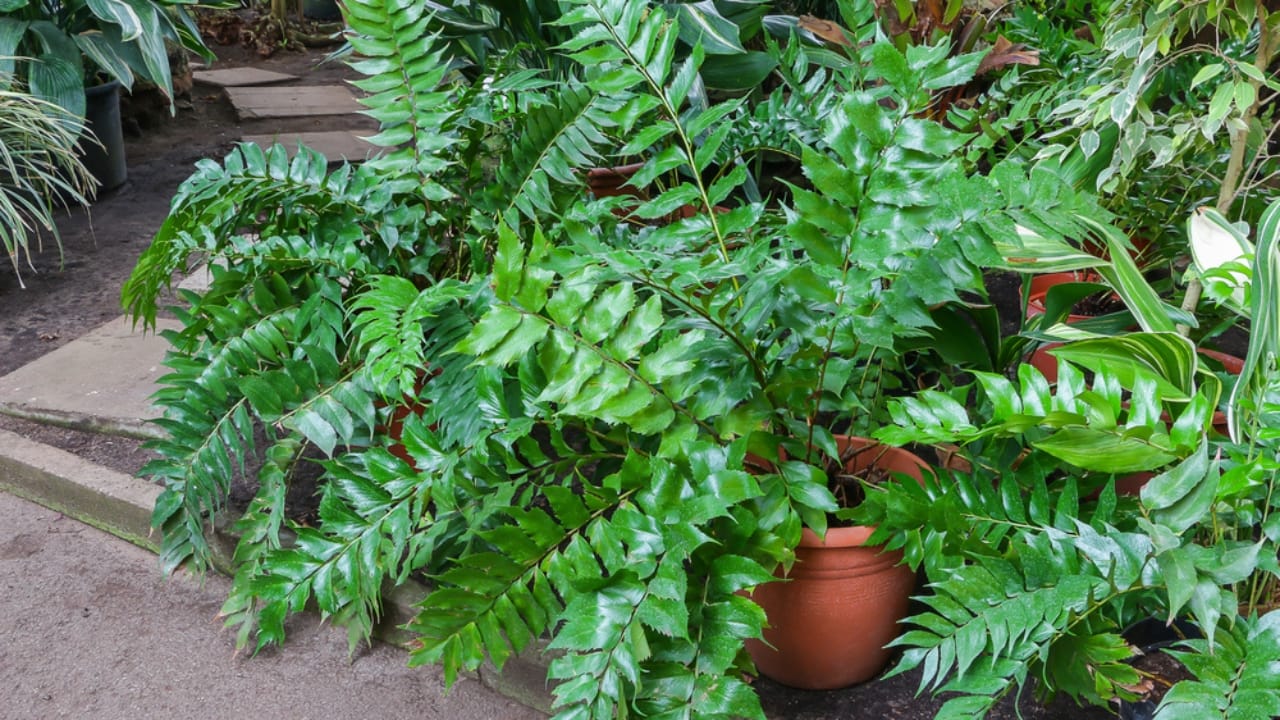
Holly ferns are beautiful and hardy ferns with glossy, dark green leaves that resemble holly leaves. They add a touch of elegance to shaded areas in your garden.
This fern can thrive in various conditions and is known for its ability to tolerate dry soil once established. It’s an evergreen, so it will keep its leaves all year round.
- US Hardiness Zone: 6-10
- Growing Tips:
- Plant in shaded to partially shaded areas.
- Keep the soil moist but not soggy.
- Add mulch around the base to retain moisture.
2. Lady Fern (Athyrium filix-femina)
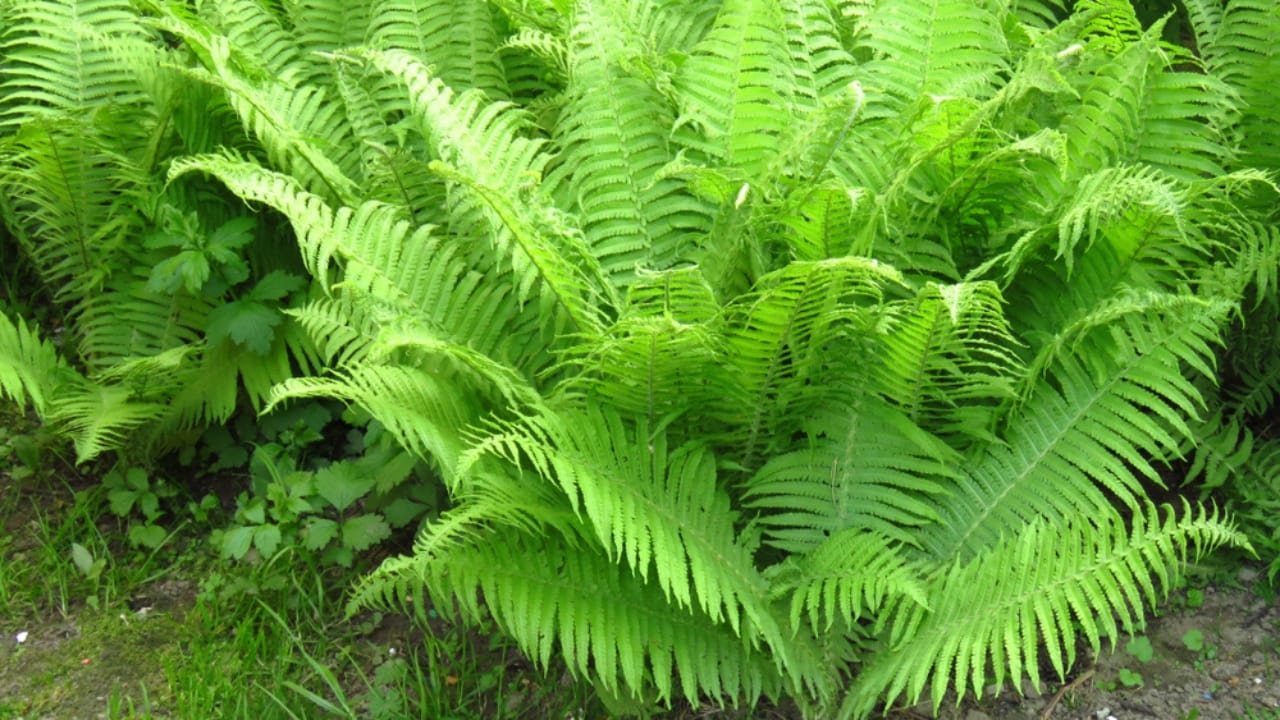
Lady ferns are graceful ferns with delicate, feathery fronds that unfurl beautifully in the spring. They create a soft, airy look in any shady spot and can grow in various soil types.
Lady ferns are great for naturalizing and often thrive in woodland gardens. They change color in the fall, showcasing lovely golden hues before they die back in winter.
- US Hardiness Zone: 3-8
- Growing Tips:
- Plant in shaded areas with well-drained soil.
- Keep the soil consistently moist, especially in hot weather.
- Fertilize in spring with a balanced fertilizer for healthy growth.
3. Autumn Fern (Dryopteris erythrosora)
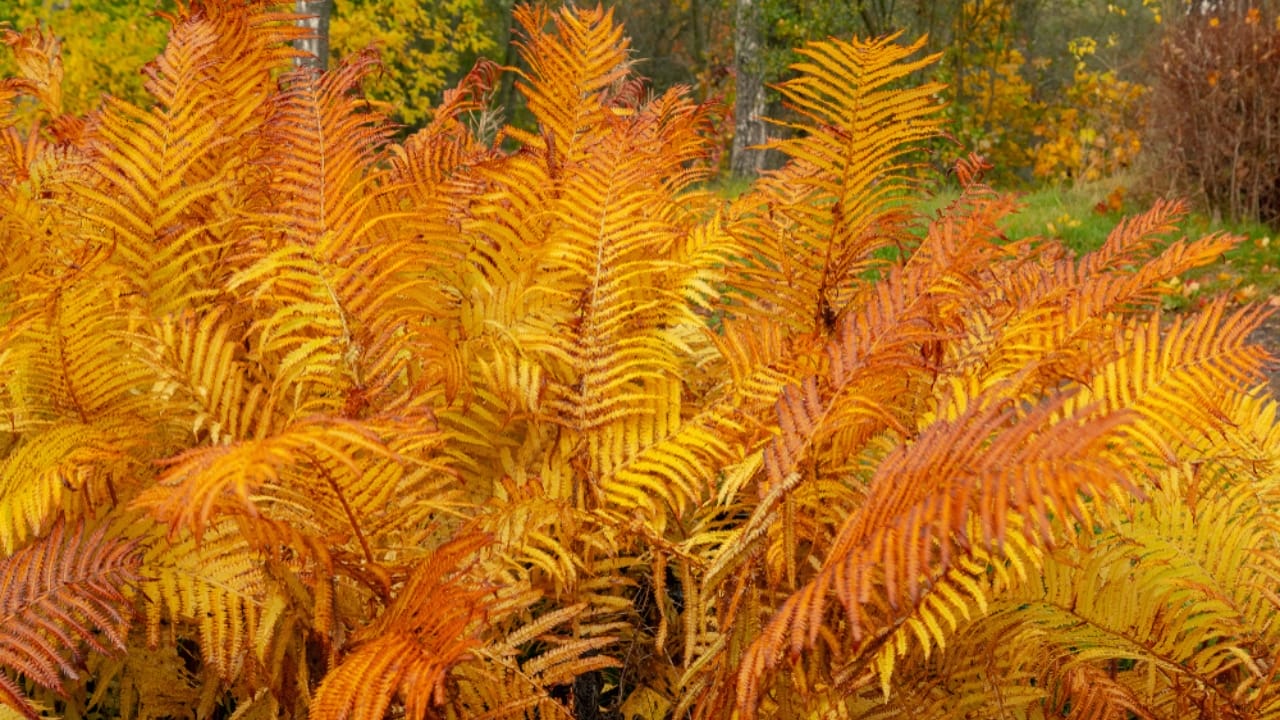
Autumn ferns are known for their stunning orange to copper-colored fronds that emerge in spring, providing a vibrant contrast against the green foliage. As the season progresses, the leaves mature to a rich green, adding a layered look to your garden.
They prefer shady spots and can tolerate drier conditions once established.
- US Hardiness Zone: 5-9
- Growing Tips:
- Choose a spot with partial shade for best results.
- Water regularly to keep the soil moist, especially in the first year.
- Trim back dead fronds in early spring to promote new growth.
4. Christmas Fern (Polystichum acrostichoides)
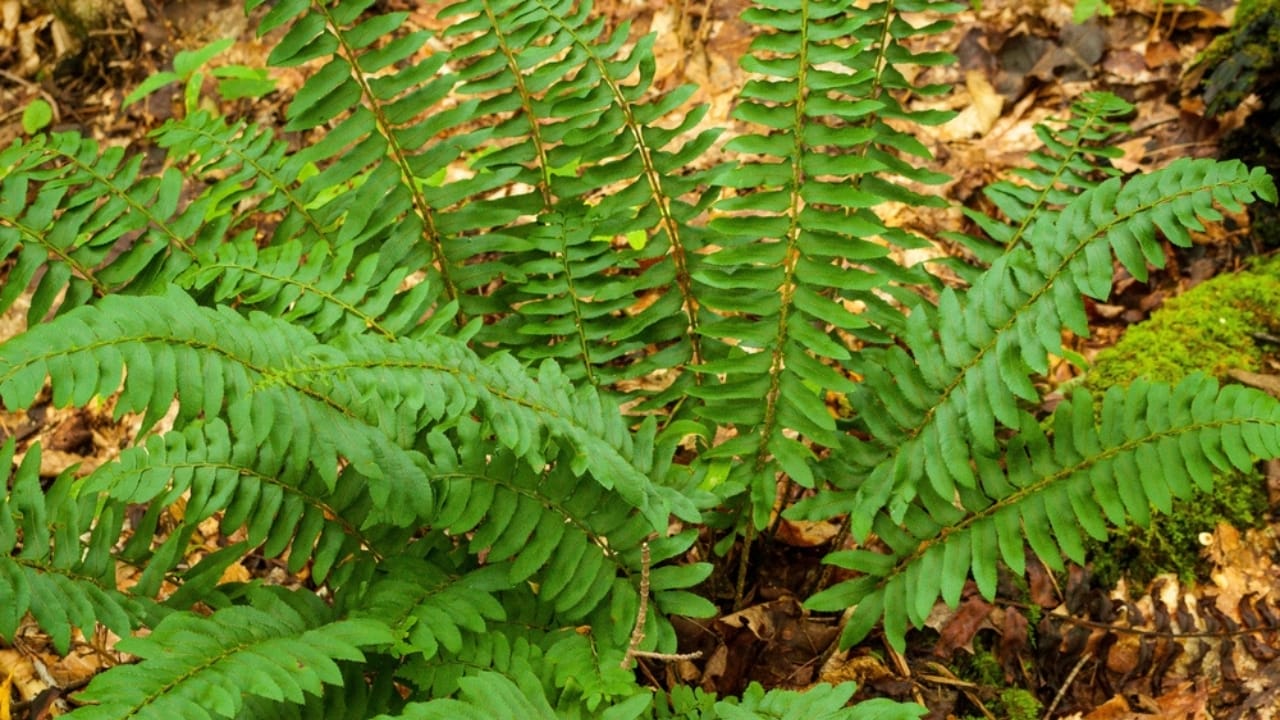
Christmas ferns are named for their festive look, as their evergreen fronds resemble holiday decorations. These ferns are native to North America and are perfect for shaded gardens, adding year-round greenery.
They are very hardy and can grow in various soil types, making them a reliable choice for gardeners looking for low-maintenance plants.
- US Hardiness Zone: 4-9
- Growing Tips:
- Plant in shaded to partially shaded areas.
- Ensure good drainage in the soil to prevent rot.
- Mulch around the base to keep the roots cool and moist.
5. Northern or Common Maidenhair Fern (Adiantum pedatum)
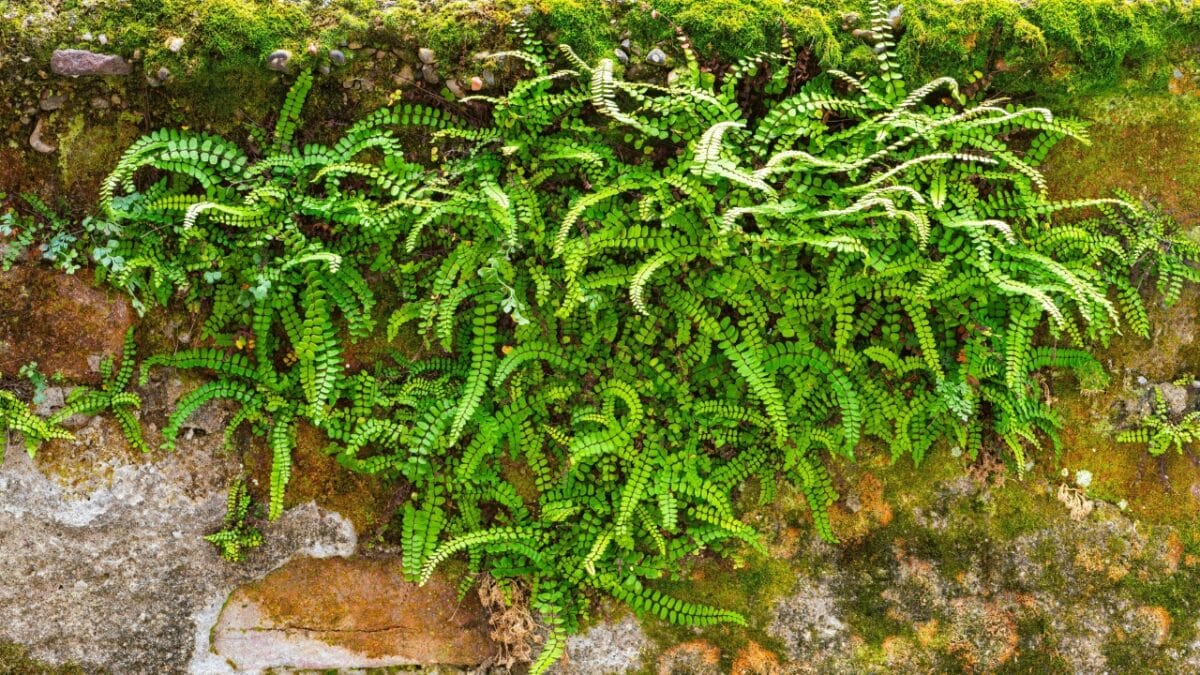
The Northern maidenhair fern is known for its unique, fan-shaped leaves on delicate black stems. This fern adds a touch of elegance to shaded areas and prefers cool, moist conditions.
It’s a bit more delicate than some other ferns but can create stunning displays in your garden. The soft, lacy appearance of its fronds makes it a favorite for many gardeners.
- US Hardiness Zone: 3-8
- Growing Tips:
- Plant in partial to full shade for optimal growth.
- Keep the soil consistently moist but not soggy.
- Avoid heavy foot traffic around the plant to prevent damage to the fronds.
6. Southern Maidenhair Fern (Adiantum capillus-veneris)

The Southern maidenhair fern features delicate, lacy fronds that have a lovely soft green color. It thrives in warm, humid conditions and is often found in moist, shady areas like riverbanks or wooded spots.
This fern’s elegant appearance makes it a popular choice for both gardens and indoor spaces. It needs a bit more care than some ferns but rewards you with its beauty.
- US Hardiness Zone: 6-9
- Growing Tips:
- Plant in partial shade to full shade with high humidity.
- Keep the soil consistently moist but not waterlogged.
- Mist the fronds regularly to maintain humidity, especially in dry climates.
7. Southern Wood Fern (Dryopteris ludoviciana)

The Southern wood fern is a robust fern with bright green, upright fronds that can reach impressive heights. It prefers moist, shady areas and can tolerate a variety of soil types.
This fern is excellent for creating a lush woodland feel in your garden. It’s hardy and will thrive even in less-than-ideal conditions.
- US Hardiness Zone: 5-10
- Growing Tips:
- Choose a spot with partial shade for best growth.
- Keep the soil moist but well-drained to prevent root rot.
- Mulch around the base to help retain moisture and suppress weeds.
8. Broad Beech Fern (Phegopteris hexagonoptera)
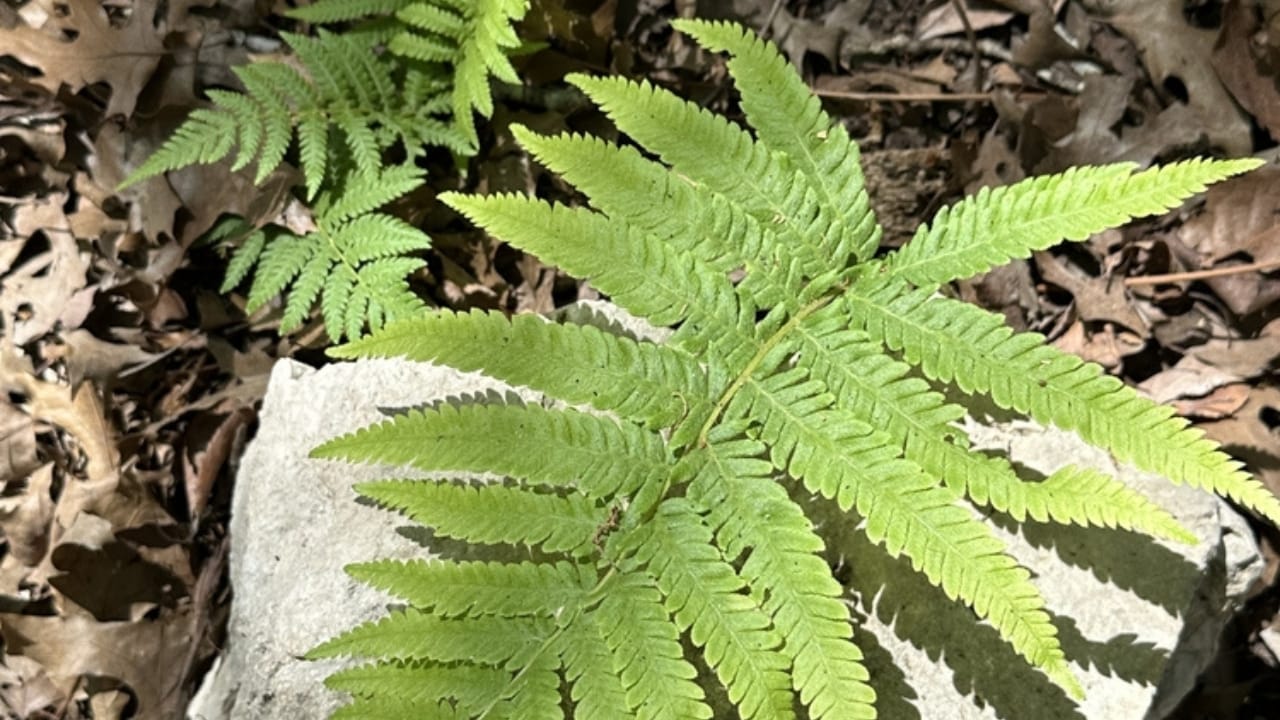
The Broad beech fern includes wide, triangular fronds that create a lush and full appearance. It is typically found in wooded areas and prefers shady, moist environments.
This fern can tolerate some drought once established, making it adaptable.
- US Hardiness Zone: 5-9
- Growing Tips:
- Plant in shaded or partially shaded locations.
- Ensure the soil is rich in organic matter and well-drained.
- Water regularly, especially during dry spells, to keep the soil moist.
9. Ebony Spleenwort (Asplenium platyneuron)
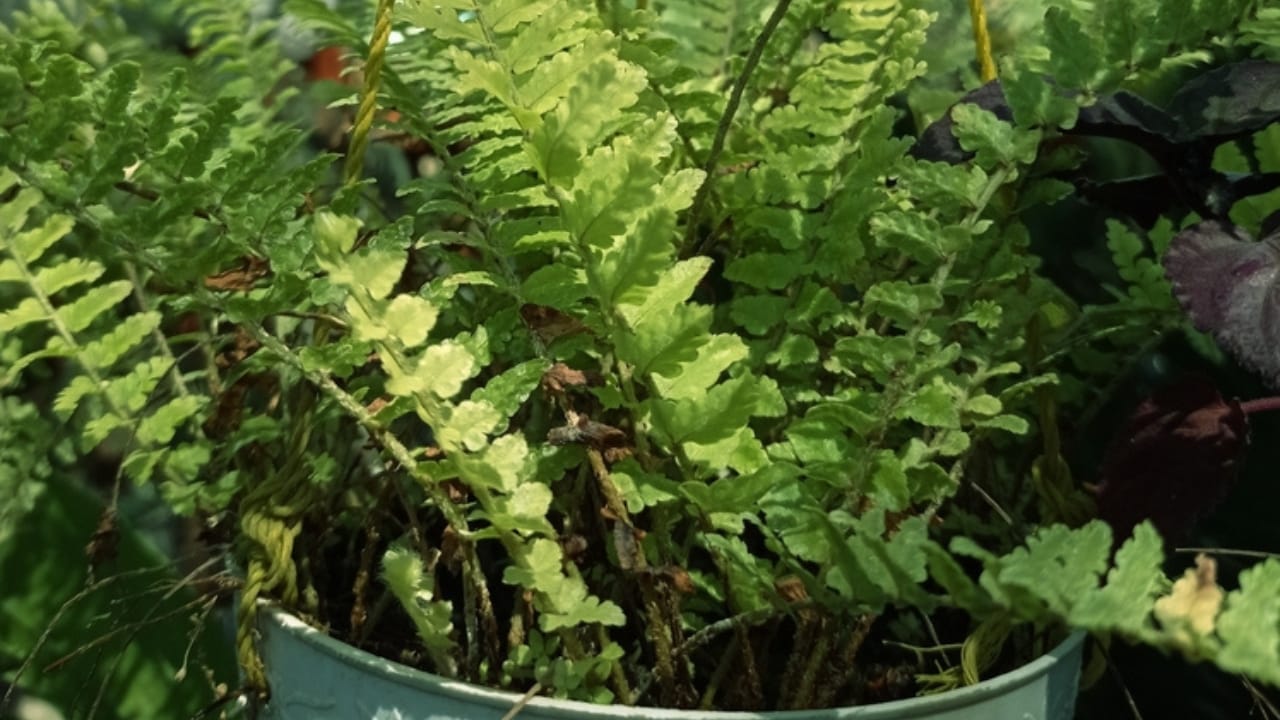
The Ebony spleenwort displays dark green, glossy fronds that grow in a rosette shape. Its leaves are often divided, giving it a delicate look.
This fern can thrive in a variety of conditions, including dry and rocky areas, making it quite versatile. It prefers shaded spots and can add a striking contrast to lighter green plants.
- US Hardiness Zone: 3-8
- Growing Tips:
- Plant in shady areas, especially under trees or shrubs.
- Use well-draining soil that can hold some moisture.
- Water only when the soil feels dry to the touch, as it can tolerate drier conditions.
10. Interrupted Fern (Osmunda claytoniana L.)
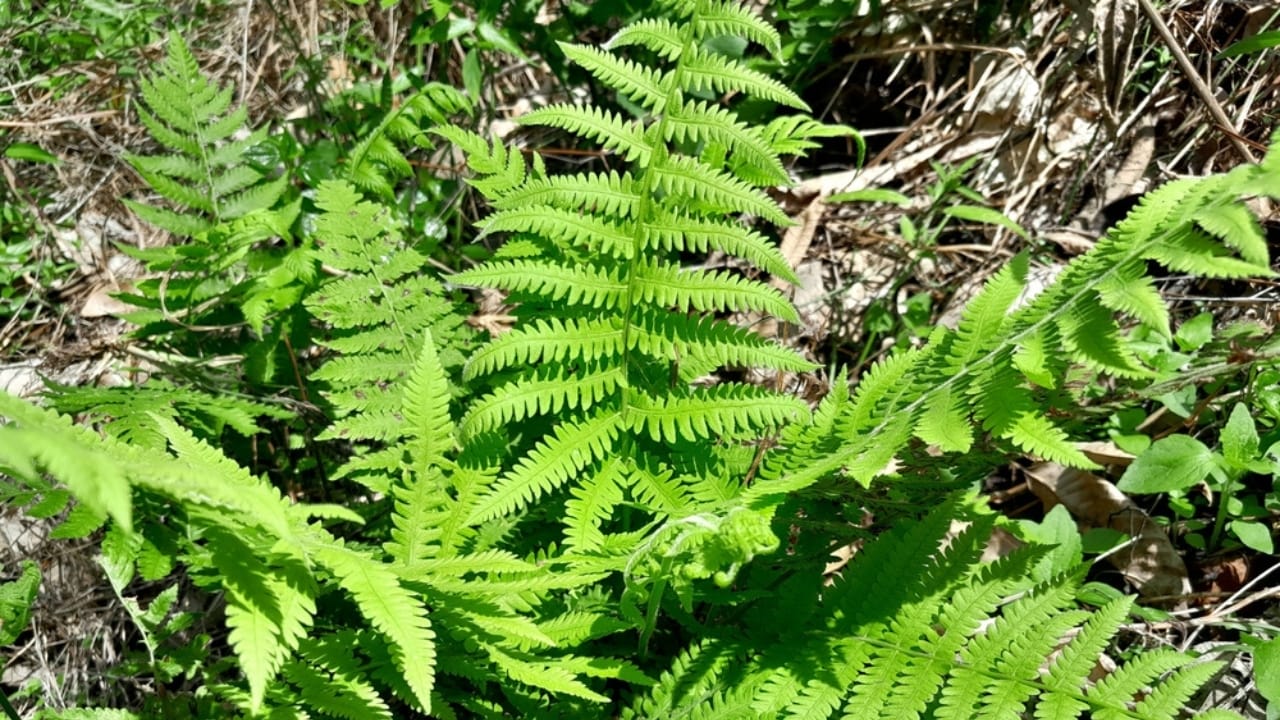
The Interrupted fern is known for its distinct fronds that have a “broken” appearance due to the fertile leaflets that grow in the middle. This fern thrives in wet, shady environments and is often found near streams or in low-lying areas.
It adds a unique texture to your garden and is a great choice for naturalizing.
- US Hardiness Zone: 3-7
- Growing Tips:
- Plant in areas with partial to full shade, preferably near moisture.
- Keep the soil consistently moist, especially during dry seasons.
- Mulch to maintain moisture and protect the roots from extreme temperatures.
11. Cinnamon Fern (Osmunda cinnamomea)

Cinnamon ferns have tall, feathery fronds that can reach up to four feet high. In the spring, you’ll notice their bright cinnamon-colored spores, which give this fern its name.
They thrive in moist, shaded areas and are perfect for creating a lush, natural look in your garden. They are also tolerant of wet soil, making them ideal for low spots or near water features.
- US Hardiness Zone: 4-8
- Growing Tips:
- Plant in partial to full shade for the best results.
- Keep the soil moist, especially during dry periods.
- Mulch around the base to help retain moisture and keep the roots cool.
12. Ostrich Fern (Matteuccia struthiopteris)

Ostrich ferns exhibit long, arching fronds that resemble ostrich feathers. These ferns can grow quite large, reaching heights of three to six feet.
Ostrich ferns love moist, shady areas and often grow near streams or in woodland settings. They spread quickly, making them great for filling in bare spots in your garden.
- US Hardiness Zone: 3-7
- Growing Tips:
- Choose a location with partial shade or full shade.
- Ensure the soil is rich and consistently moist.
- Water regularly, especially in hot weather, to keep the soil damp.
13. Japanese Painted Fern (Athyrium niponicum)

Japanese painted ferns are known for their stunning foliage, which features silvery-blue fronds with purple accents. They add a splash of color and elegance to shady spots in your garden.
These ferns thrive in cool, moist environments and can adapt well to various soil types. They are perfect for rock gardens or borders where you want to showcase their beauty.
- US Hardiness Zone: 4-9
- Growing Tips:
- Plant in partial to full shade for the best color.
- Keep the soil moist but well-drained to prevent rot.
- Fertilize lightly in spring to promote healthy growth.
14. Western Sword Fern (Polystichum munitum)

Western sword ferns are large, evergreen ferns with long, sword-shaped fronds that can grow up to three feet tall. They are native to the Pacific Northwest and thrive in shady, moist areas.
These ferns are great for adding structure to your garden and can tolerate a range of soil types. They are also very hardy and can last for many years.
- US Hardiness Zone: 5-9
- Growing Tips:
- Choose a shady location with well-draining soil.
- Water regularly, especially in dry spells, to keep the soil moist.
- Remove any dead or damaged fronds in spring to encourage new growth.
15. Royal Fern (Osmunda regalis)
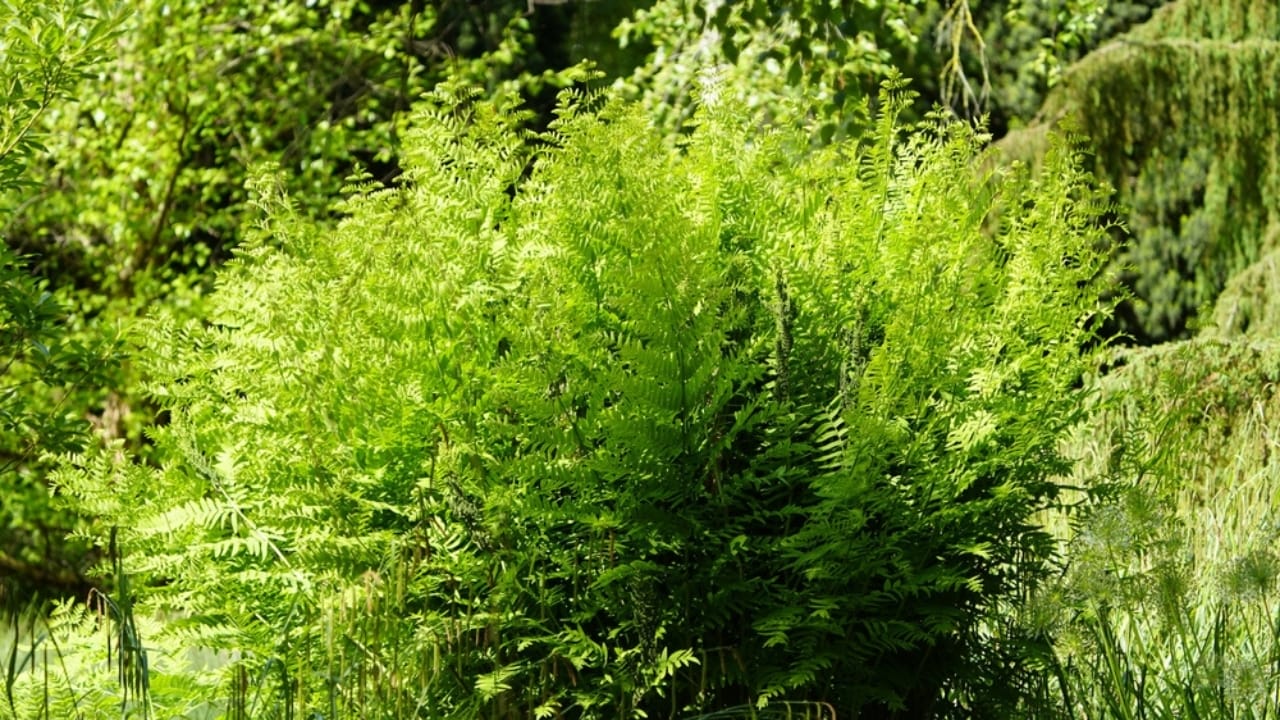
Royal ferns are impressive ferns with tall, elegant fronds that can grow up to six feet high. They have a rich green color and can thrive in wet areas, often found in swamps or along riverbanks.
Their striking appearance makes them a fantastic choice for naturalizing or creating a lush landscape. Royal ferns can also tolerate some shade, making them versatile for various garden settings.
- US Hardiness Zone: 3-10
- Growing Tips:
- Plant in partial shade to full shade for optimal growth.
- Keep the soil consistently moist, especially during hot weather.
- Add mulch to help retain moisture and protect the roots.
Picking out the right ferns for your garden allows you to enjoy a lush, green space that thrives with minimal maintenance.
Nancy has been a plant person from an early age. That interest blossomed into a bachelor’s in biology from Elmira College and a master’s degree in horticulture and communications from the University of Kentucky. Nancy worked in plant taxonomy at the University of Florida and the L. H. Bailey Hortorium at Cornell University, and wrote and edited gardening books at Rodale Press in Emmaus, PA. Her interests are plant identification, gardening, hiking, and reading.

